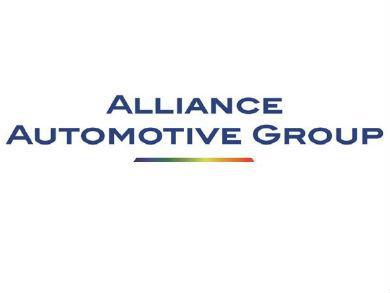Apple’s Self-Driving Car Is Real–and Now There’s Proof
Weeks after getting clearance from the California D.M.V. to test-drive its self-driving cars on the state’s roads, an autonomous Apple vehicle has been spotted leaving an Apple facility. Bloomberg reports that a white Lexus RX450h S.U.V. decked out with commercially bought—as opposed to custom-made—sensors is driving on California roads, confirming that Apple is making progress on the self-driving car program that it has kept a closely-guarded secret. After layoffs, executive shuffling, and leadership failures, Apple reportedly set a late two thousand seventeen deadline last year for its project to demonstrate feasibility.
“Project Titan,” as the $750 billion company’s autonomous-vehicle project is known internally, has come up against a number of roadblocks over the past year as Apple struggled to determine whether to develop its own car or merely self-driving software. “It was an incredible failure of leadership,” on source told Bloomberg last fall. Later, Apple brought in Bob Mansfield, who helped develop the iPad, to rein in a reportedly directionless team. Mansfield determined Apple would concentrate on a self-driving platform, permitting it to playmate with automakers instead of having to build its own car from scrape.
In the meantime, Apple leadership has refused to even acknowledge the company’s self-driving-car project publicly, and C.E.O. Tim Cook has spoken only vaguely about Apple’s desire to come in the car space. “Do you reminisce when you were a kid, and Christmas Eve, it was so arousing, you weren’t sure what was going to be downstairs?” Cook told investors during Apple’s annual shareholder meeting last February. “Well, it’s going to be Christmas Eve for a while.”
While expanding its software ecosystem to include cars could be a major win for Apple, the company is coming in the self-driving space relatively late in the game—and the market is getting ever more cutthroat. Google parent company Alphabet’s self-driving-car division Waymo recently sued Uber, alleging that Uber wrongfully obtained schematics for its self-driving sensors when it acquired Otto, an autonomous vehicle company began by a former Google engineer whom Alphabet accuses of stealing proprietary technology. Now, as the lawsuit heats up, the former Google engineer, Anthony Levandowski, is reportedly stepping aside from running the parts of Uber’s self-driving division pertaining to its sensor technology. (“Waymo’s injunction motility is a misfire: there is no evidence that any of the 14,000 files in question ever touched Uber’s servers and Waymo’s assertion that our multi-lens LIDAR is the same as their single-lens LIDAR is clearly false,” Uber associate general counsel Angela Padilla said in a statement earlier this month. “If Waymo genuinely thought that Uber was using its secrets, it would not have waited more than five months to seek an injunction. Waymo doesn’t meet the high bar for an injunction, which would stifle our independent innovation—most likely Waymo’s objective in the very first place.”)
Losing the suit could be devastating for Uber, which has pinned its longterm hopes on substituting its existing drivers with an autonomous fleet. If the company is spanked with an injunction, it could have to commence parts of its self-driving initiative over again—putting it behind Google, Tesla, and its smaller rival Lyft and General Motors, which are working together on developing self-driving technology. Even Apple, which has hardly any road-test miles under its belt compared to Uber, could potentially get a gam up.
